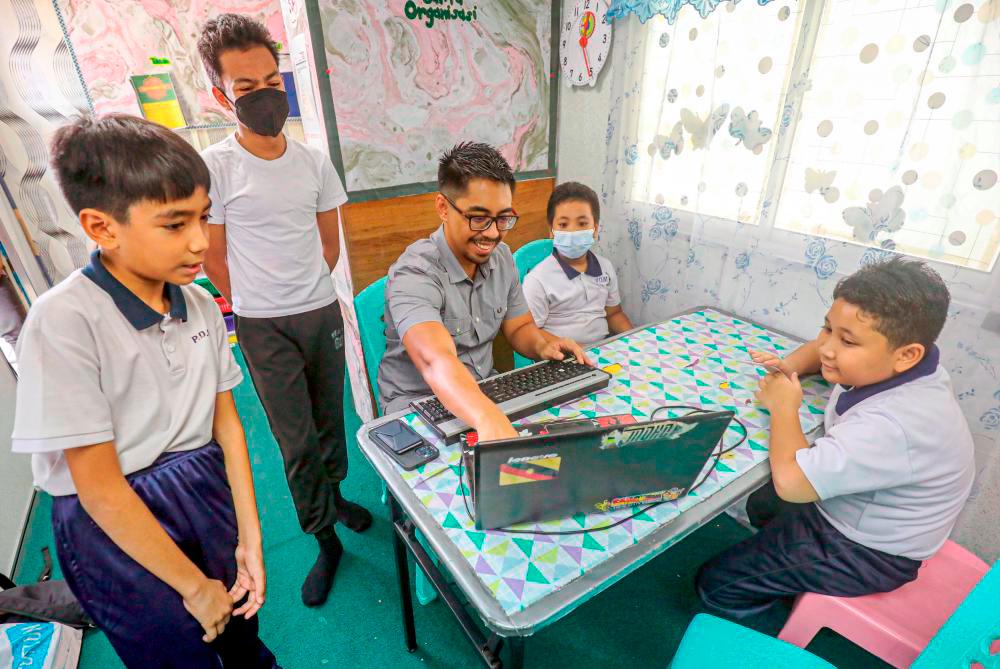PETALING JAYA: According to the latest statistics from the Education Ministry’s Special Education database, about 314,000 or 17% of students enrolled in primary schools in 2020 were dyslexic.
Globally, it is estimated that one out of 10 people suffer from dyslexia, which is a condition where a person has difficulty reading.
It usually comes with other learning disorders such as dyspraxia, which is difficulty in performing coordinated movements, and dyscalculia, which involves difficulty with numbers and dysgraphia, a neurological disorder characterised by difficulty in writing.
Malaysia Dyslexia Association president Abdullah Syakirin Mohammad said dyslexia is usually diagnosed via an academic and psychological assessment.
“This can be done at five years of age as long as the child can recognise alphabets and numbers,” he said, adding that the main challenge the association faced is in educating the public that dyslexic children are special and their minds are wired differently.
“At the Malaysia Dyslexia Association, we offer educational assessment and screening by a registered psychologist, overseen by our group of advisers who are highly skilled and experienced.
“We also offer intervention classes at four locations in the Klang Valley, specifically at our headquarters on Jalan Ampang, as well as in Bangi, USJ and Taman Tun Dr Ismail.
“Intervention classes are also offered at Sungai Petani, Universiti Utara Malaysia Sintok and Jitra.”
National Organisation for Dyslexia Malaysia (NOD) president Dr Mullai Ramaiah Arunachalam told theSun that most parents are unaware of dyslexia as awareness programmes are rare in Malaysia.
“We have conducted over 200 workshops as even teachers are unaware of what dyslexia is. Teachers do not tell parents that it is perfectly okay to have a dyslexic child. In Western countries, dyslexic children are considered to be gifted as they sometimes have the latent talents of geniuses.
She said Albert Einstein, Alexander Graham Bell and even former Singapore prime minister Lee Kuan Yew were dyslexic.
Mullai said many parents react with shock and refuse to accept that their children have dyslexia as they feel it is a social stigma.
She said parents prefer to ignore the problem and seek help when their children are 17 or 21 years old, which is very late.
She added that NOD has devised a comprehensive teaching tool to teach in English and Tamil, which is popular in Malaysia and abroad.
“We conduct workshops in English and Tamil throughout the country and overseas, and in January, the Selangor government sponsored a workshop for B40 students, teachers and parents.
“NOD also has done a comprehensive study with Universiti Kebangasaan Malaysia titled ‘The Relationship between Dyslexia and Delinquency: A Psycho-Socio Criminogenic Approach’.
“The findings showed 51.4% of delinquents at the Henry Gurney School in Malacca have dyslexia.”
Tadika Visual Sukses principal Kausalya Appalanaidu, whose kindergarten has several dyslexic pupils, said the learning difficulty can be managed.
“It depends on the parents, who should involve themselves by helping their dyslexic children, who only spend four hours at school and the remaining time at home.
“Parents need to continue teaching their children after school as they cannot depend on the teachers alone,” she said, adding that such parental involvement would ensure dyslexic children have a head start on their education.









